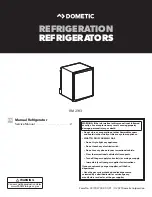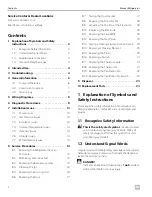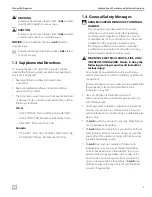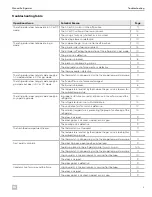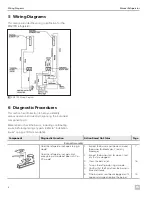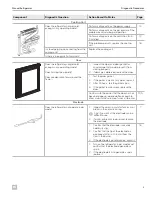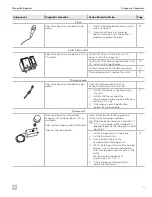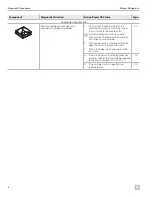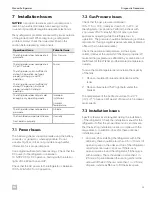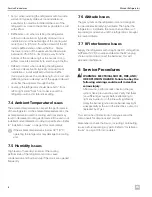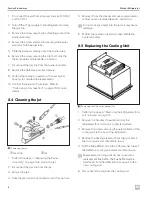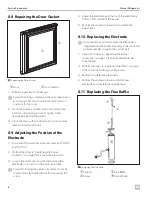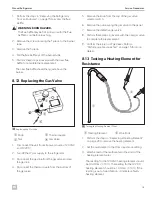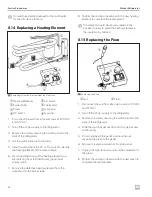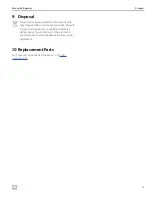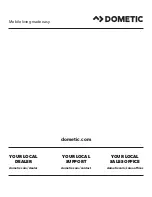
14
EN
Service Procedures
• Fan(s): when installing the refrigerator with two side
wall vents (typically slide-out room installations),
a ventilator fan must be installed at the rear of the
refrigerator as close to the center as possible to assist
with airflow.
• Baffle Extension: when installing the refrigerator
with two side wall vents (typically slide-out room
installations) and the outer edge of the cooling unit
more than 1 in. (25
mm) from the sidewall of the RV,
install a baffle extension below the fins. . Start at
the lower portion of the upper vent and lead up to
between 0.25–0.50 in. (6–13 mm) away from the
bottom of the condensing fins to ensure a strong
airflow is maintained directly to and through the fins.
• Deflector shield: when installing the refrigerator
with two side wall vents (typically slide-out room
installations), install a deflector shield air baffle
(turning vein) above the condensing fins to assist with
deflecting the air sideways out of the upper side wall
vent after the air passes through the fins.
• Leveling: the refrigerator should be set at 3° from
left to right and 6° from front to back. Level the
refrigerator within this tolerance setting.
7.4 Ambient Temperature Issues
The ambient temperature can impact the performance
of the refrigerator. As the ambient temperature rises, the
air temperature around the cooling unit rises and may
result in decreased cooling performance if the unit is not
installed and ventilated according to specification. Refer
to “Installation Issues” on page 13 for more details.
I
If the ambient temperature is below 32 °F(0 °C)
operating the refrigerator may damage the cooling
unit.
7.5 Humidity Issues
High levels of humidity can impact the cooling
performance of the refrigerator and can cause
condensation and frost build up if the doors are opened
frequently.
7.6 Altitude Issues
The gas system on the refrigerators are not designed
to operate at extremely high altitude. The higher the
refrigerator is in altitude, the more chance there is of
improper gas operation until the refrigerator is brought
to a lower altitude.
7.7 RF Interference Issues
Supply the refrigerator with straight-line DC voltage from
a different 12 VDC source and deaden the RV (unplug
shore cord and disconnect the batteries), this will
eliminate interference.
8 Service Procedures
WARNING: ELECTRICAL SHOCK, FIRE, AND/
OR EXPLOSION HAZARD. Failure to obey the
following warnings could result in death or
serious injury:
After service, perform a leak check on the gas
system, like a pressure drop test. Verify that there
is a sufficient gas supply before attempting to
light any burner. Air in the line will significantly
delay the burner ignition and a burner may light
unexpectedly as the air in the line clears out and is
replaced by LP gas.
This section has information to help you access the
components for diagnosis and service.
Remember to check the basics, including contributing
issues, before replacing any parts. Refer to “Installation
Issues” on page 13 for more detail.

